Healdsburg Carnegie Public Library
Introduction
Text-to-speech Audio
Of the several impressive civic buildings that once graced Healdsburg, this Carnegie Library is the sole survivor. It was designed by noted Bay Area architect Brainerd Jones at the height of the second revival of classical architecture. Jones also designed the Passalacqua home at 726 Fitch Street. This imposing building incorporates the columns, stairs, and pediment typical of Classical and Neoclassical structures. The first free library in Healdsburg, established in the late 1870s, failed due to lack of attendance, although newspaper editorials at the time blamed the stern and forbidding temperaments of the volunteer librarians. A new library, run by the Ladies Temperance League, opened in the late 1880s in the then-new City Hall. The City took over operations of the library seven years later and continued to run it until it was absorbed into the County system of the the 1970s. When a new library building was built in the 1980s at the corner of Piper and Center Streets, this beloved structure became the home of the Healdsburg Museum. After extensive interior renovations, the Museum opened here in 1990. The Healdsburg Museum is open to the public Wednesday through Sunday, 11:00 - 4:00 pm. Admission is free.
Images
Healdsburg Public Library in progress, 1910
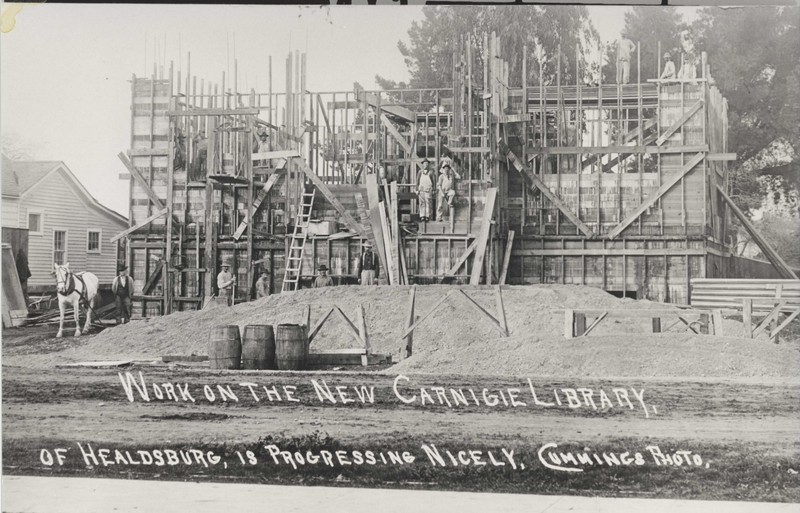
Healdsburg Public Library nearing completion,1911
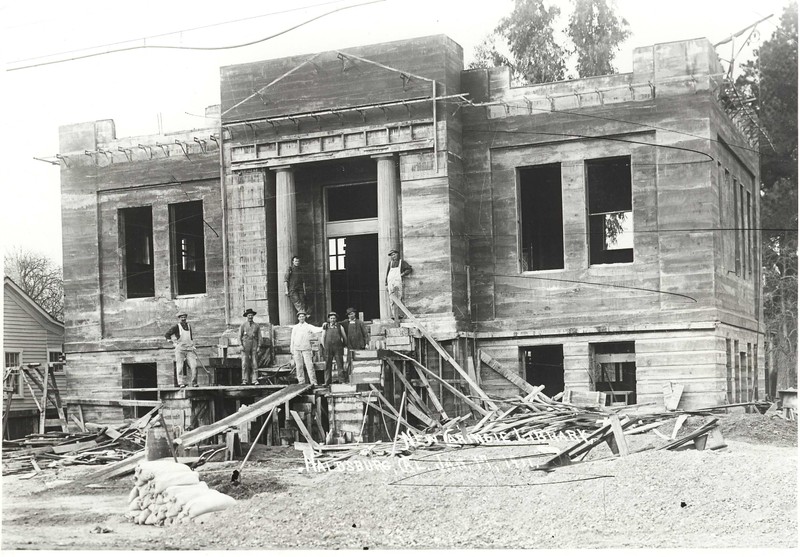
Healdsburg Carnegie Library benefactor, Andrew Carnegie
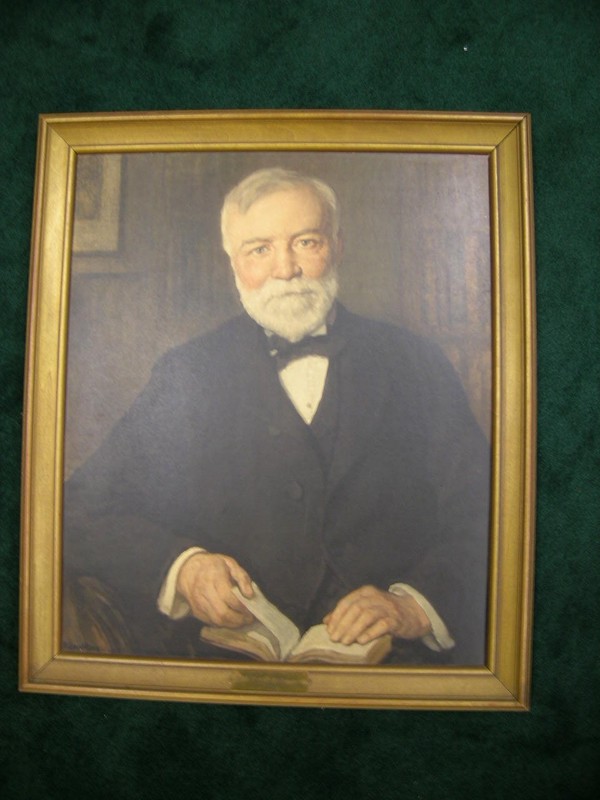
Healdsburg Public Library, 1920s
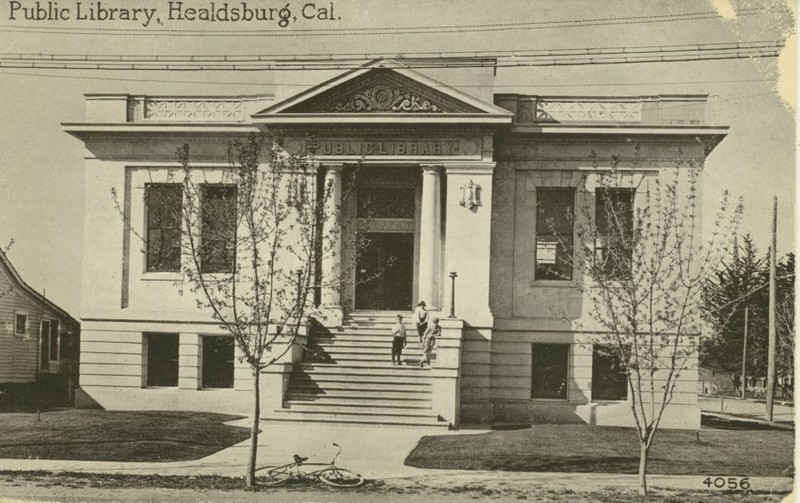
Healdsburg Public Library, 1940s
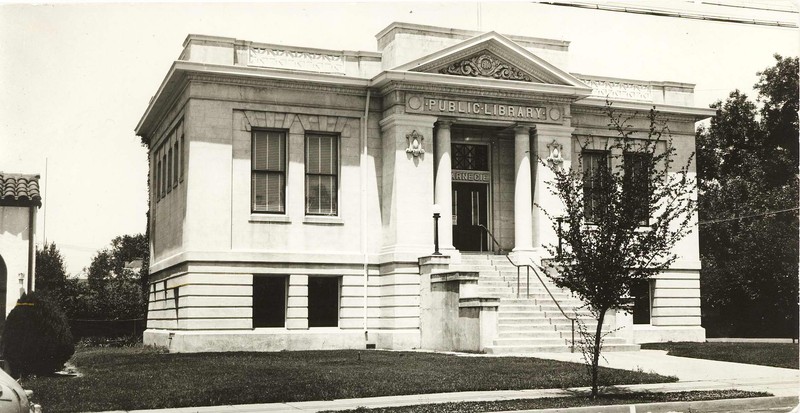
Healdsburg Public Library, 1960s

Healdsburg Public Library, 1982
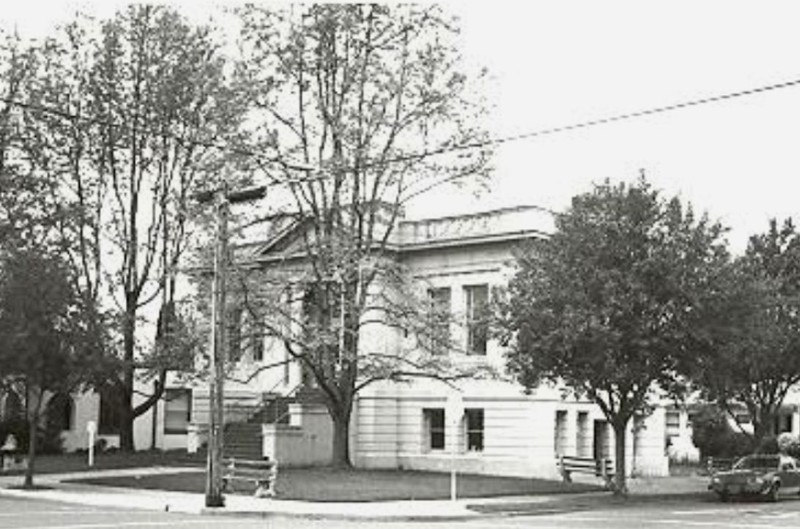
Interior of Healdsburg Public Library, 1983
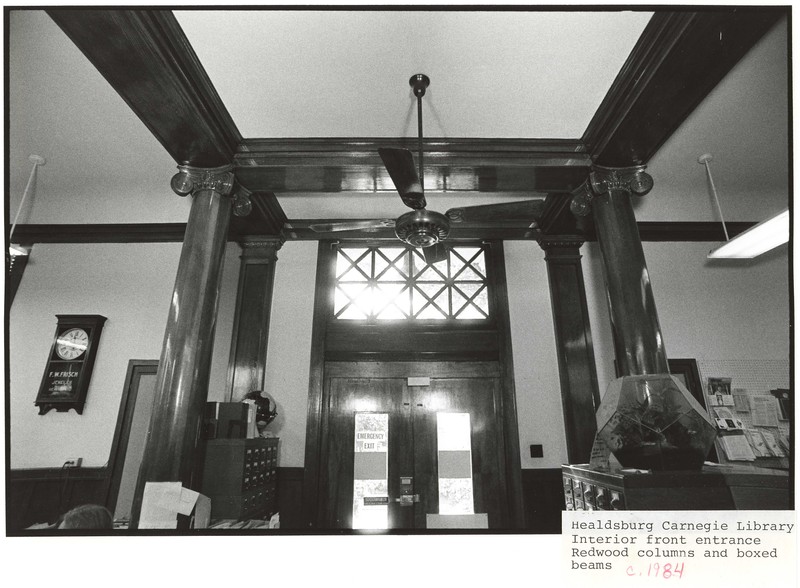
Healdsburg Museum in renovated and repurposed former Healdsburg Library, 1990
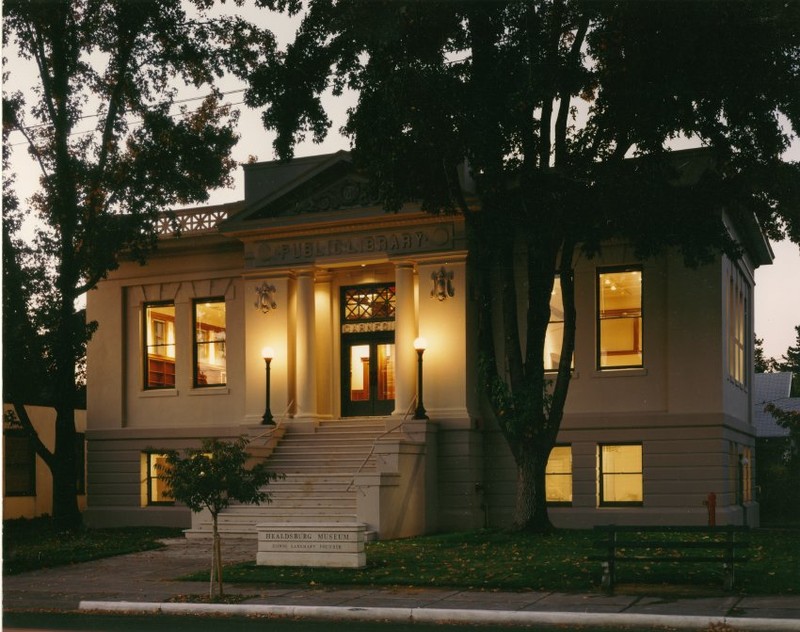
Healdsburg Museum, 2016
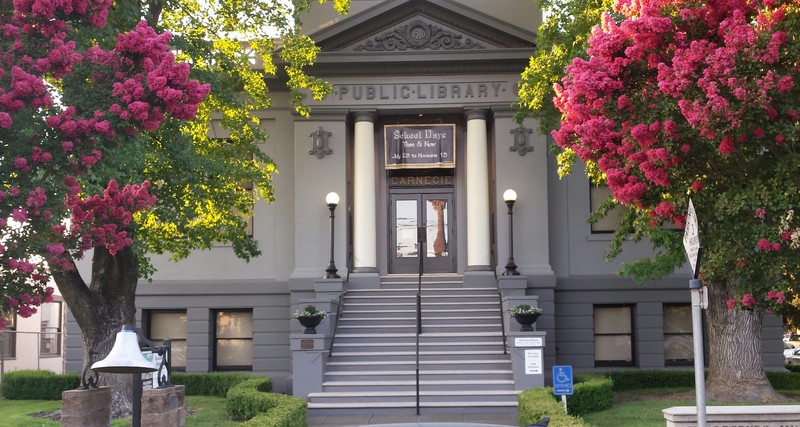
Healdsburg Museum, 1995
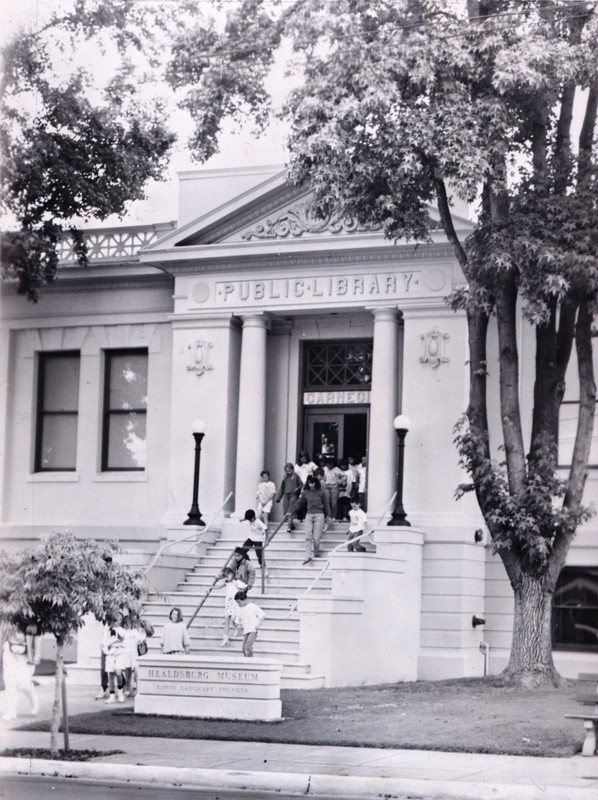
Healdsburg Public Library, c. 1911
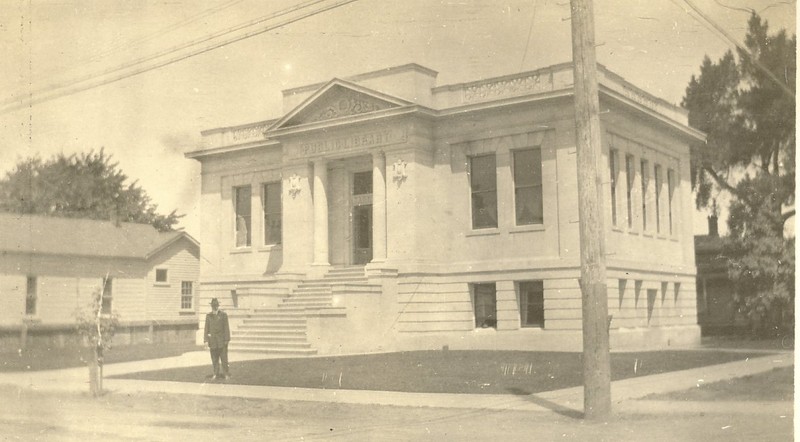
Healdsburg Public Library being converted to Healdsburg Museum, 1988
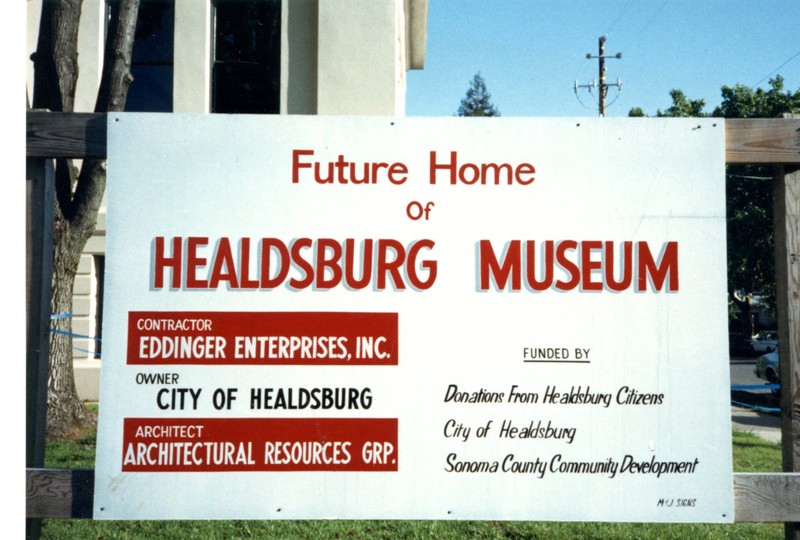
Backstory and Context
Text-to-speech Audio
This Neo-Classical Revival building served as Healdsburg’s library for over 70 years. The building was constructed from 1910 to 1911 on a lot just two blocks away from Healdsburg’s Plaza. Funding for the project came from Andrew Carnegie’s philanthropic community benefit grants. Neo-Classical style is a revival style derived from a blending of Classical Greek and Roman architectural styles and was a reaction to the excessiveness of the Baroque period. The style reached the height of its popularity from the eighteenth to the early nineteenth centuries. Characteristics of Neo-Classical Revival include grand scale, geometric forms, domed or flat roofs, classical columns, as well as symmetrical façades and floorplans. [1]
The Healdsburg Carnegie Library (now the Healdsburg Museum) building is listed in the National Register of Historic Places, the register of the most historically significant architecture in the United States. The importance of the building derives not just from the composition of its elegant pillars and pediments but also from its association with significant historical events: the implementation of Andrew Carnegie’s philanthropic public library grants.
The original libraries in Healdsburg were book collections held at private schools. Healdsburg’s first public library was located on West Street (now Healdsburg Avenue) on the second floor of Fox’s Masonic Hall. The library was supported through generous donations from the Masons and funds raised by various benefit concerts and literary debates. When the new City Hall was built at the corner of Matheson and Center streets in 1886, the library and reading rooms were part of the design, so the facility moved to the building’s second floor.
An ambitious steel tycoon, Andrew Carnegie also believed in using his wealth for the benefit of all people. He chose to do so by funding libraries. Local communities throughout the United States, and around the world, received funding from Carnegie to construct a public library. The communities only needed to provide the land and a tax base to support the library and maintain the property. [2]
The first Carnegie libraries were funded in 1886; the last requests were granted in 1919, and upon completion of those buildings, 1,412 communities in the United States had constructed 1,679 Carnegie-funded libraries. Carnegie library buildings were also in Canada, the British Isles, South Africa, Rhodesia (Zimbabwe), India, Australia, New Zealand, and Fiji.
Five Carnegie libraries were constructed in Sonoma County. The Santa Rosa and Sebastopol libraries were demolished. The Sonoma Carnegie building now houses the Chamber of Commerce. Petaluma and Healdsburg converted their Carnegie Libraries into museums.
Healdsburg applied for funding from the Carnegie Foundation in 1908 and was granted $10,000 in August 1909. Architect Brainerd Jones of Petaluma was selected to draw the plans for the new building. Jones built the Petaluma Carnegie Library and other notable residences, commercial buildings, and schools in Sonoma County. Frank Sullivan of Santa Rosa won the contract for construction of the library. He was the best-qualified low bidder at $9,473.[3]
In June of 1911, the Healdsburg Library Board wrote to Andrew Carnegie, seeking additional funds. The Library Board received a curt, typed response from Carnegie’s secretary denying the request.
The library flourished and eventually outgrew the Carnegie building, which by 1985 needed substantial work. The new Library building at Center and Piper streets was completed in 1987. A citizens group formed to save and restore the Carnegie building. Led by the Healdsburg Historical Society, this group successfully raised over half a million dollars to retrofit and refurbish the building. Eddinger Enterprises headed up the restoration and conversion of the former library, a cherished local building. In 1990, the restored building opened and has continued to benefit and serve the larger community as the Healdsburg Museum.
Sources
[1] Blumenson, John, Identifying American Architecture, A Pictorial Guide to Styles and Terms, 1600-1945, American Association of State and Local History, 1983, pp 68-69
[2] Healdsburg Carnegie Library, National Register of Historic Places Registration Form, May 12, 1988, pp 5,7-8
[3] Healdsburg Carnegie Library, National Register of Historic Places Registration Form, May 12, 1988, pp 5,7
Healdsburg Museum and Historical Society
Healdsburg Museum and Historical Society
Healdsburg Library donation to Healdsburg Museum and Historical Society
Healdsburg Museum and Historical Society
Healdsburg Museum and Historical Society
Healdsburg Museum and Historical Society
Healdsburg Museum and Historical Society
Healdsburg Museum and Historical Society
Healdsburg Museum and Historical Society
Healdsburg Museum and Historical Society
Healdsburg Museum and Historical Society
Healdsburg Museum and Historical Society
Healdsburg Museum and Historical Society
